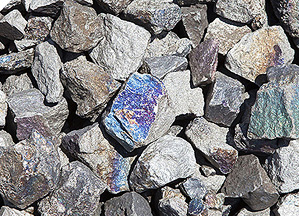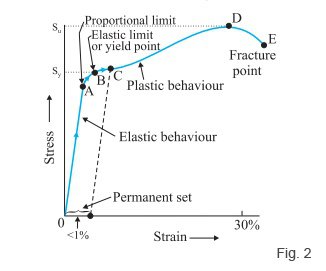Silicon in Steel Making…
Silicon plays an impotent role in the steelmaking process, as it reacts with oxygen and other impurities in the molten steel. This reaction forms silicon dioxide, a compound that rises to the surface, allowing it to be easily removed. By removing the impurities, silicon helps improve the quality of the steel. Additionally, silicon enhances the strength and hardness of the steel, making it more durable and resistant to wear and tear. It also improves the steel’s resistance to corrosion and high temperatures. The presence of silicon in the composition of steel contributes to its overall stability and reliability. The presence of silicon in steel can also improve its high-temperature strength and making it an essential element in the production of heat-resistant steels used in turbines and other high-temperature environments. In summary, the reaction between silicon and steel plays a vital role in enhancing the mechanical, chemical, and thermal properties of the alloy. Therefore, the advantage of silicon lies in its ability to purify the steel and enhance its mechanical properties, resulting in higher quality and more versatile steel products.
Silicon in Steel: Enhancing Strength and Performance
Introduction
When it comes to manufacturing steel, there are various elements that play a crucial role in determining its strength and performance. One such element is silicon. Silicon is widely used in the steel industry to enhance the properties of steel, making it more resilient, durable, and resistant to corrosion. In this article, we will explore the role of silicon in steel production and its impact on the final product.
The Significance of Silicon in Steel
Silicon, a chemical element with atomic number 14, is primarily used as a deoxidizing agent during the steelmaking process. It is added to molten steel to remove oxygen and other impurities, thereby improving the quality of the steel produced. Additionally, silicon also contributes to enhancing the physical and mechanical properties of the steel, making it an essential element in the steel manufacturing industry.
How Does Silicon Enhance Strength?
Silicon significantly improves the strength of steel by promoting the formation of various beneficial compounds such as silicon carbide and silicides. These compounds strengthen the steel’s microstructure and increase its hardness. Furthermore, silicon aids in the formation of a fine-grained structure in steel, which further enhances its strength and toughness.
Is Silicon Crucial for Surface Protection?
Yes, silicon plays a vital role in providing surface protection to the steel. When silicon is added to steel, it forms a thin layer of silicon oxide on the surface, which acts as a protective barrier against corrosion and oxidation. This protective layer ensures that the steel remains resistant to environmental factors, extending its lifespan and maintaining its structural integrity.
Silicon Content in Different Types of Steel
The silicon content in steel varies depending on the type and application of the steel. Here are a few examples of the silicon content in different types of steel:
- Structural Steel: Typically contains silicon in the range of 0.15% to 0.35%. This level of silicon helps in enhancing the strength, toughness, and weldability of structural steel.
- Electrical Steel: Electrical steels, used in the manufacturing of transformers, motors, and generators, require high silicon content. Silicon levels in electrical steels can range from 2% to 4.5%. This high silicon content helps to reduce energy losses and improve magnetic performance.
- Stainless Steel: Silicon content in stainless steel is relatively low, usually around 0.4% to 1%. However, even at this lower level, it plays a significant role in improving the corrosion resistance and heat resistance of stainless steel.
Positive effects of silicon in steel making:
- Increased strength and hardness: Silicon helps to increase the strength and hardness of steel, making it more durable and resistant to wear and tear.
- Improved resistance to oxidation: Silicon forms a protective oxide layer on the surface of steel, which helps to prevent corrosion and increase the lifespan of the material.
- Enhanced heat resistance: Silicon improves the heat resistance of steel, allowing it to withstand high temperatures without deformation or loss of strength.
- Better electrical conductivity: Silicon can enhance the electrical conductivity of steel, making it suitable for applications that require good electrical performance.
Negative effects of silicon in steel making:
- Increased brittleness: Excessive silicon content can lead to increased brittleness in steel, making it more prone to cracking and breakage under certain conditions.
- Reduced weldability: High silicon levels can negatively affect the weldability of steel, making it more difficult to join different pieces together through welding processes.
- Decreased ductility: Silicon can reduce the ductility of steel, making it less capable of being stretched or bent without breaking.
- Formation of undesirable compounds: Silicon can react with other elements present in the steel, leading to the formation of undesirable compounds that can affect the overall quality and performance of the Steel.
To minimize or completely eliminate the negative impact of silicon in the steelmaking process, there are several effective approaches that can be taken. One such method involves adjusting the composition of the steel by incorporating deoxidizers or fluxes into the process. These additives work to reduce the silicon content, thereby mitigating its detrimental effects on the final product.
Another viable option is to carefully control the temperature and duration of the steelmaking process. By optimizing these parameters, steel manufacturers can enhance the removal of silicon and achieve superior steel quality. This precise control allows for the elimination of any undesired silicon content, resulting in high-quality steel.
In addition to these methods, employing specialized refining techniques such as ladle metallurgy can play a crucial role in reducing silicon levels even further. This advanced method involves refining the steel in a ladle, which provides precise control over the composition and purification of the metal. By incorporating ladle metallurgy into the steelmaking process, manufacturers can ensure that the silicon content is minimized to the desired level, thus enhancing the overall quality of the steel.
Furthermore, implementing strict quality control measures throughout the entire steelmaking process can help in minimizing silicon content. Regular testing and analysis can identify any deviations and allow for corrective actions to be taken promptly.



